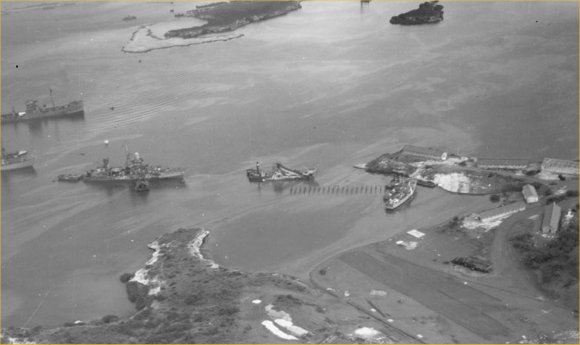 The Dutch West Indies were visited only rarely by warships before the second world conflict, despite its importance in the global economy. On the islands Aruba and Curaçao, thousands of tons of crude oil was refined, not only for civil purposes, but also for military organizations, such as the Royal Air Force. In this light, it is surprising that this part of the world was only lightly defended by the Dutch, due to the lack of funds perhaps, but also due to the political obstinacy to invest in the armed forces in general. The Dutch West Indies were visited only rarely by warships before the second world conflict, despite its importance in the global economy. On the islands Aruba and Curaçao, thousands of tons of crude oil was refined, not only for civil purposes, but also for military organizations, such as the Royal Air Force. In this light, it is surprising that this part of the world was only lightly defended by the Dutch, due to the lack of funds perhaps, but also due to the political obstinacy to invest in the armed forces in general.
It was not until the late thirties when the world saw the threat of Japan and Germany grow, and finally money was spent to make up for two decades of decay. For the Antilles, this meant that plans were made to bolster its defences, which included the detachment of various types of warships to this area. These were sloops and submarines at first, but the plan was to station motor torpedo boats as a permanent warning against invaders. These small boats were small, fast and dangerous, but the downsides were that they needed a lot of maintenance and could only operate a short distance from their base. Unfortunately, the German advance on the European continent came too soon.
However, Curaçao would later see the erection of this base, as some smaller vessels originally intended for the NEI ended up here. The Japanese thrust in the Pacific prevented them from being sent to their original destination, and they came in handy when the hated German U-boats started to operate in the Carribean from mid February 1942 onwards. The pool of vessels included 12 motortorpedoboats built by the Canadian Power Boat Company, 1 air/sea rescue boat and two small submarine chasers. Although none of these craft were really suited for their task, they were very useful in finding survivors from torpedoed ships in the vicinity.
Because their stay in this part of the world was accidental, there were few facilities to support these craft. The principal base was to be at Parera, near Willemstad on Curaçao.
At first, there were only an old slipway and a few tents where repairs were made. New construction was planned, and by the end of 1943, much was accomplished. A 60 metres long concrete jetty was built, in addition to a large boat-house where two MTBs could be overhauled simultaneously. Repair shops were set up adjacent to it, while depth-charges and torpedoes could be stored beneath the earth's surface. There was also several buildings to accommodate the crews during their stay ashore. In the Sint-Annabay, several sheds were rented where torpedoes and depth-charges received their periodical overhauls. In St. Michielsbay, there was a test range for torpedoes.
Despite the presence of the well-equipped shore establishments, none of the motor torpedo boats was ever operational as such. Many difficulties with the torpedoes and the tubes had to be overcome, and time wasn't on their side either. The German U-boat threat had virtually vanished by 1944, and there was no need to maintain this large pool of ships here. Some were broken up, others were sent to the UK or Australia. Without the ships, there was no need to keep the base open either. After the official name had changed from "Torpedomotorbotenbases Parera" to "Marinebasis Parera" on June 1 1944, the base soon ceased to exist.
|
![]()
![]()
![]()